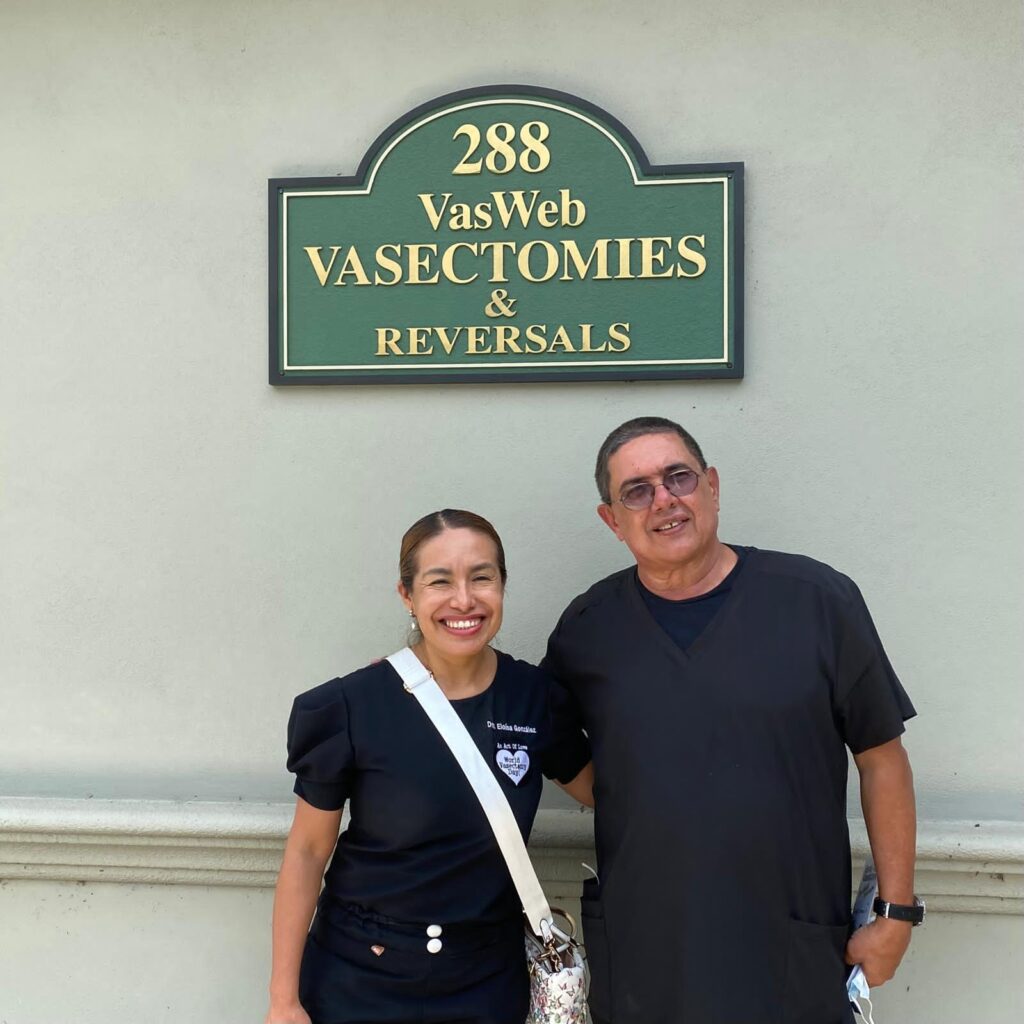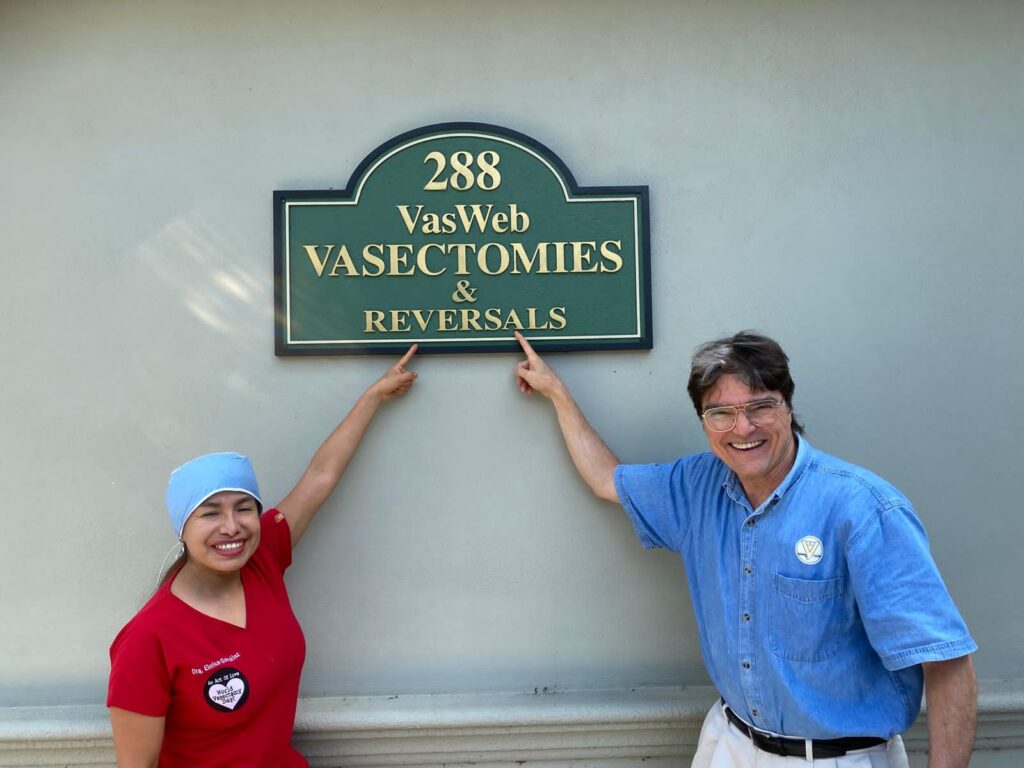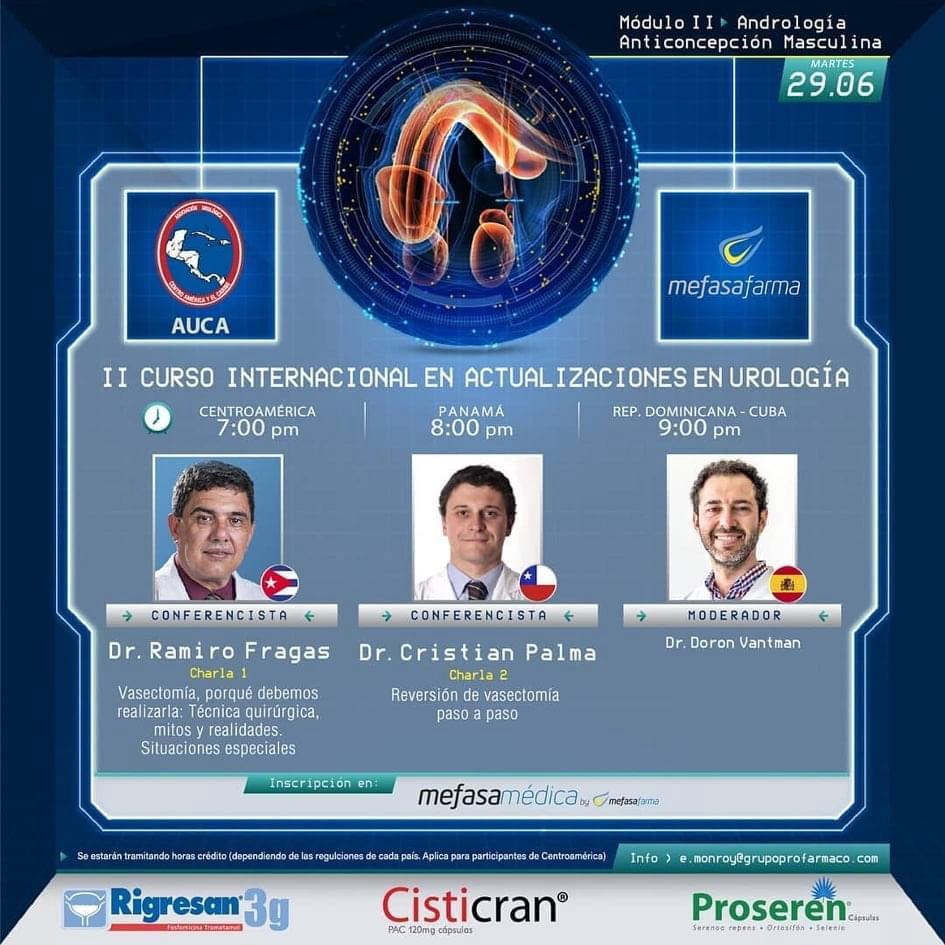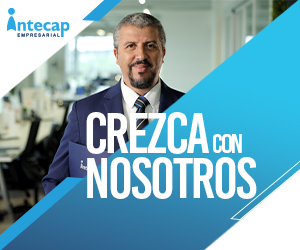Estimated reading time: 5 minutes
“No-scalpel vasectomy, a male contraceptive method that the couple should consider.”
The no-scalpel vasectomy could be more common among couples determined to put an end to reproduction, says Dr. Ramiro Fragas, a specialist in Urology and the performance of this technique.
In an exclusive interview for the Central American Digital Newspaper, the doctor affirms that for dozens of years, the responsibility of family planning has fallen on women, under the concept that she is in charge of stopping procreation and undergoing the ligation of her tubes.
“However, – he continues – the evolution of surgical techniques and social thought has today placed vasectomy as a possible option to consider for men, with benefits for the couple and their family.”
Dr. Fragas shows passion for the subject and emphasizes the benefits of this procedure: “Vasectomy is the best option, as it is a minor, very simple surgery that takes between 15 and 20 minutes. Rest is two or three days, and sexual activity can be resumed after a week, although it is not effective until after 3 months and/or you have ejaculated about 20 times and after having a semen study confirmed that “There is no sperm in the semen, to be able to authorize sexual activity without contraceptive protection.”
He also emphasized that “vasectomy does not protect men from sexually transmitted diseases” and warns that, although it has been practiced since the 70s, it is still not commonly performed in Latin America and other countries, because the sexist idea of resorting to the method of tubal ligation in women when a couple goes to the family planning consultation to put an end to fertility.
“The idea is that this changes,” he emphasizes, “especially because vasectomy is a much simpler and less risky procedure for a man, in relation to ligation for women, and also much less expensive for the health system.”
His experience on the subject allows him to assure that, in addition to prejudice, misinformation is a determining cause in why many more men do not opt for this method, “if we break the taboo of machismo, if we make the method more widely known, and if we achieve “If family planning programs propose it as an option to couples who have decided to put fertility at risk, vasectomy would be practiced much more than tubal ligation in women, as usually occurs in Europe, Asia and North America.”
“Today the outlook is more favorable in those countries where it was not performed before and thanks to the work of promoting and disseminating the method, these surgeries are gradually increasing. This has been possible thanks to non-profit organizations that promote responsible parenthood, and the need to avoid the interruption of pregnancies and unwanted children, especially due to the economic and social problems of these countries. Fragas recalled that in 2014 the founders of one of these organizations, “World Vasectomy Day (DMV)”, visited the island, in order to seek greater motivation and dissemination among Cuban urologists and the Health Press.
Among the images that accompany this interview appears the filmmaker Jonathan Stack, who was a user of the (VSB) method, together with his surgeon, Professor Doug Stein, one of the urologists with the most experience in the world of VSB, decided to found this organization , to bring the message to the world to spread about vasectomy to ensure that the method becomes widespread and men assume this responsibility.
For our interviewee, it is worth highlighting the impact of this program in many Latin American countries and cites the example of Dr. Eloísa González, from Mexico, who has become an enthusiastic defender of Vasectomy in her country, with impressive experience in the last years.


Along with her and Drs John Curington, Alex Galante, Dr. Fragas recently participated in a Training Course with North American Professor Doug Stein, on VSB and Vasectomy Reversal, at her Center in Tampa, United States. (Photos).
Talking to this renowned doctor is always comfortable. The professor is emphatic when clarifying that “although vasectomy is a simple and economical procedure, unfortunately the reversal of the vasectomy, in case the man wants to have children again after surgery, lasts three to four hours because it is done through microsurgery, with high magnification glasses or surgical microscope, using very thick sutures (9-0 and 10-0, thinner than a hair) and the results are not always favorable, depending on many factors, such as the time of the operation, and the experience of the surgeon, etc.
This, in his opinion, influences why vasectomy is generally recommended for couples in which both members are over 35 years old. “It cannot be a hasty decision and it should be promoted among couples in stable unions, with two children or more,” he says.
This famous urologist is in favor of the method without using a scalpel (Li technique), although in his opinion, the traditional Vasectomy (with incision) is also effective and both are very simple and can be performed by urologists or experienced doctors. , trained for it.
“Although there are urologists who feel safer with the traditional scalpel technique,” it is also very simple, only one or two incisions are made, finally explains Dr. Fragas, who presented in 2009 at the World Congress of Andrology in Barcelona, a case series of approximately 400 operated patients, together with other experts. “Li’s technique does not change much, from the traditional one, it is done with a single incision in the median raphe, local anesthesia, for me it is more attractive because it uses instruments where a scalpel is not used.”
He says that men who undergo this procedure “come back for consultation with very favorable opinions and even recommend it as something safe and simple,” he says.
“It is important to know – he adds – that it does not affect virility. Erections will continue the same and ejaculation too, but free of sperm. He also points out that the couple should continue taking care of themselves up to three months after the surgery to completely avoid any risk of pregnancy.
It is enough to talk for more than an hour to capture Dr. Fragas’ optimism in seeing this method flourish, as the couple’s safest option, in the not-too-distant future.

In the photo, you can see Drs Doran Vantman (Spain), Cristian Palma (Chile), and Ramiro Fragas (Cuba) in a Webinar talking about the importance of Vasectomy and Vasectomy Reversal within the framework of the AUCA (Urological Association of Centro America and the Caribbean), as part of the educational program of urologists in this region.
By Doctor Ramiro Fraga Valdés.



































